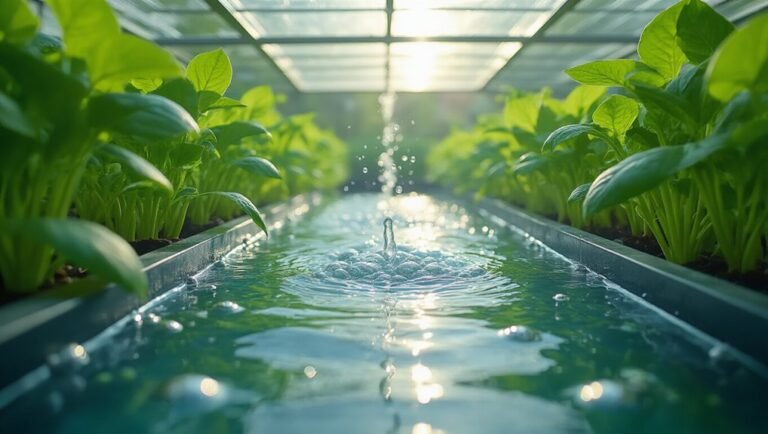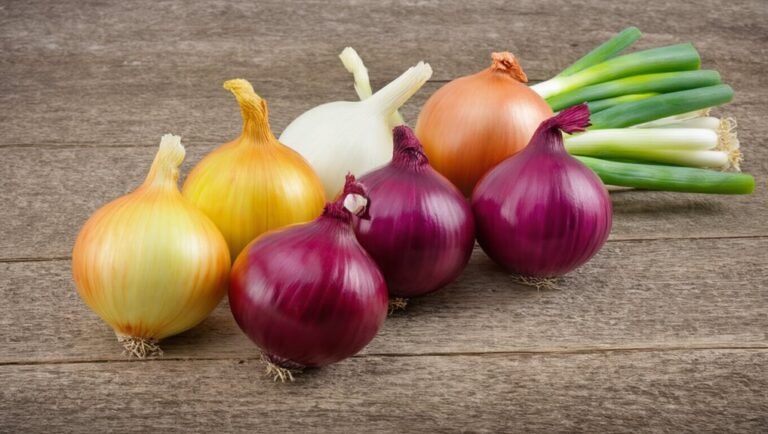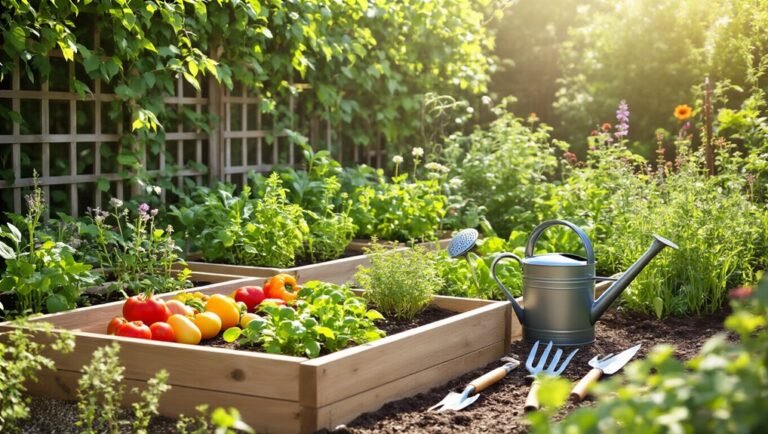To unlock gardening secrets, start by ensuring your soil is healthy with the right balance of nutrients and organic matter. Choose plants suited to your climate and sunlight for best results. Water deeply but less often to promote strong roots, and always check soil moisture. Keep an eye out for pests and utilize organic solutions to manage them. Seasonally, adapt your care practices to ensure a flourishing garden. Want to discover more tips for a thriving garden?
Key Takeaways
- Healthy soil is crucial; test pH and nutrient levels to determine necessary amendments for optimal plant growth.
- Choose plants based on climate, soil type, and sunlight to enhance growth and reduce maintenance.
- Water deeply but infrequently, ensuring about an inch per week to promote strong root systems.
- Regularly inspect for pests, using organic solutions and encouraging beneficial insects for natural control.
- Mulch and compost to retain moisture, enrich soil, and support plant health throughout the seasons.
Understanding Soil Health
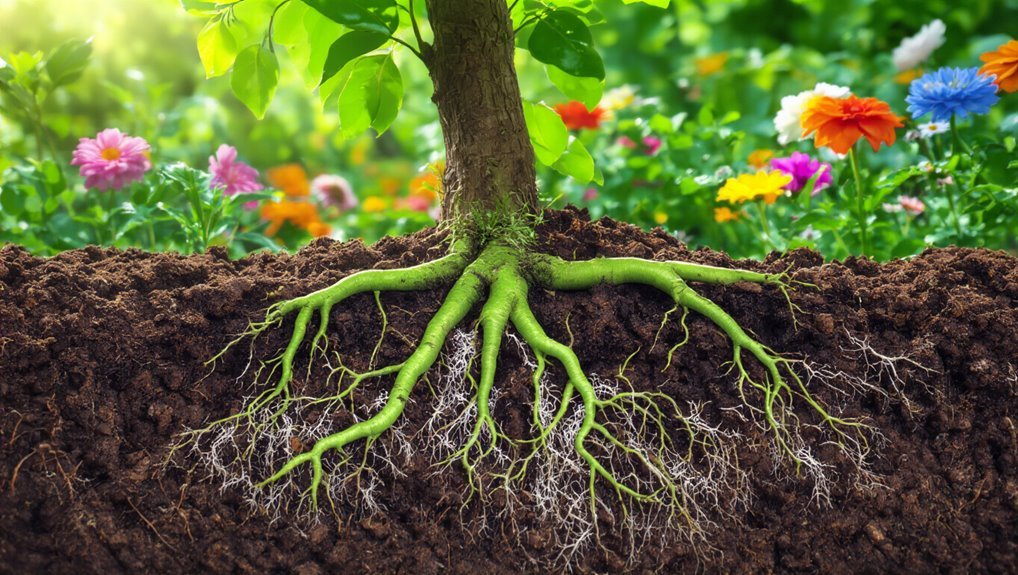
Understanding soil health is crucial for any gardener aiming to cultivate thriving plants. Healthy soil contains a balance of nutrients, organic matter, and microorganisms that support plant growth.
Start by testing your soil’s pH and nutrient levels, which helps you identify what amendments may be needed. Incorporate organic matter, like compost, to improve soil structure and boost fertility. Using organic mulching materials such as straw can further enhance your soil by conserving moisture and gradually adding nutrients as the mulch breaks down.
Regularly aerate the soil to promote root development and water drainage. Pay attention to soil moisture; it shouldn’t be too wet or too dry.
Crop rotation and cover crops can enhance soil health by preventing nutrient depletion. By nurturing your soil, you’re laying the foundation for vibrant, resilient plants ready to flourish.
Using mulch is another effective way to enrich soil health, as it helps retain moisture, suppress weeds, and add organic matter as it breaks down.
Your garden will thank you for the effort!
Choosing the Right Plants
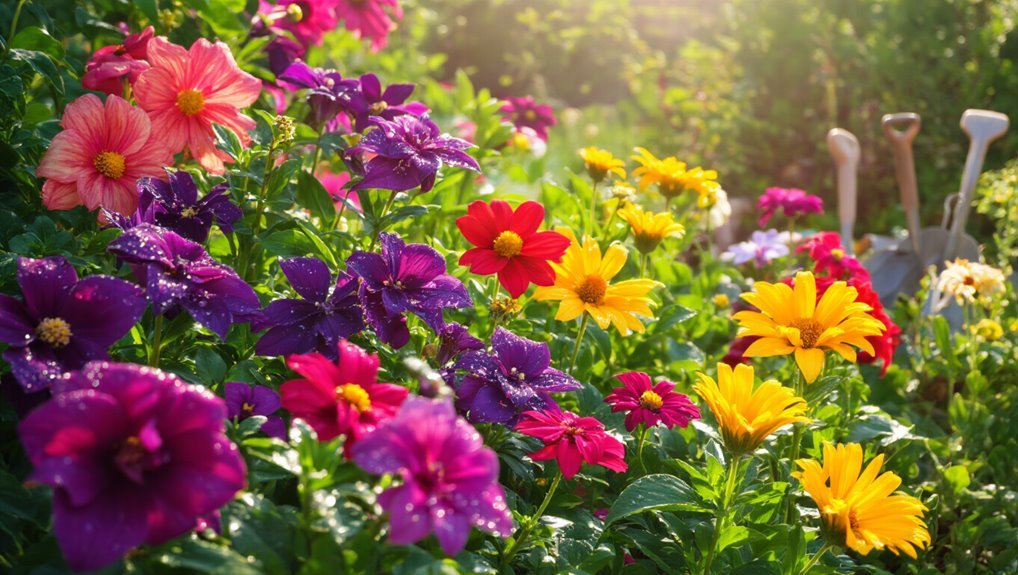
How can you ensure your garden thrives? Choosing the right plants is essential. Start by evaluating your climate, soil type, and the amount of sunlight your garden receives. Select plants that are well-suited for your conditions to maximize growth and minimize maintenance. If you want fresh flavors year-round, consider starting an indoor herb garden to complement your plant selection.
Here’s a quick reference table to help you:
| Plant Type | Sunlight Needs | Soil Preference |
|---|---|---|
| Succulents | Full sun | Well-drained |
| Ferns | Partial shade | Moist, rich |
| Vegetables | Full sun | Loamy, fertile |
| Native Flowers | Varies by species | Adaptable |
| Herbs | Full sun | Well-drained |
To give your garden a head start, consider using essential seed starting kits designed to increase your gardening success right from the beginning.
Watering Techniques for Success
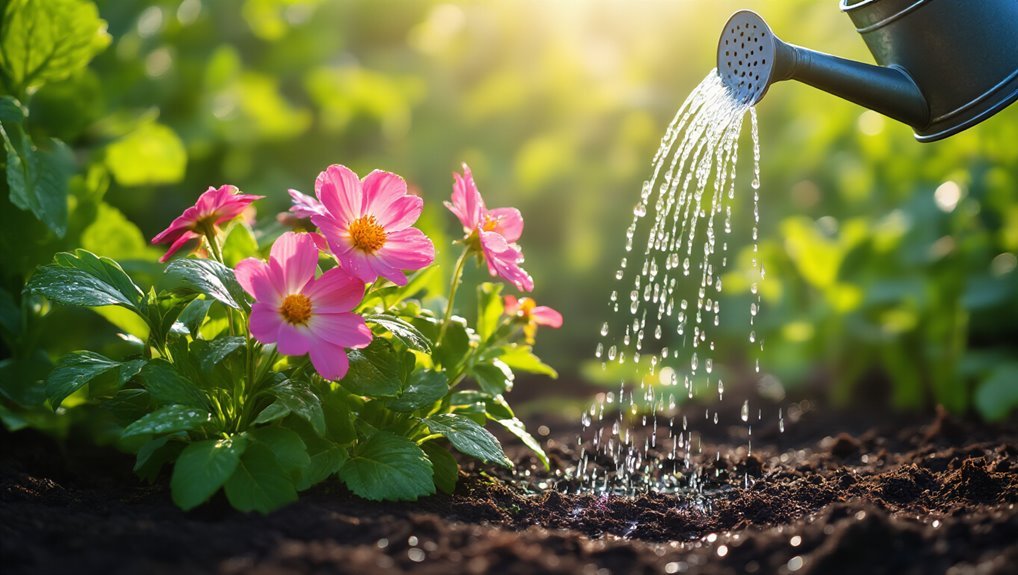
While your choice of plants lays the foundation for a thriving garden, effective watering techniques can make all the difference in their growth.
First, water deeply but less frequently to encourage strong root development. Aim for about an inch of water per week, adjusting for your climate and soil type. For gardeners interested in modern approaches, hydroponic gardening systems can provide an efficient alternative to traditional soil-based methods by delivering nutrients directly to plant roots.
Early mornings are the best time to water, as it minimizes evaporation and fungal diseases. Use soaker hoses or drip irrigation for efficient moisture delivery right to the roots.
Always check the soil before watering; if it feels moist an inch down, hold off.
Lastly, consider mulching to retain moisture and regulate soil temperature, ensuring your plants receive consistent hydration without overwatering.
For gardeners looking to maximize efficiency, drip irrigation systems offer precise water delivery and can dramatically improve your garden’s potential by reducing waste and supporting healthy plant growth.
Happy gardening!
Pest Management Strategies
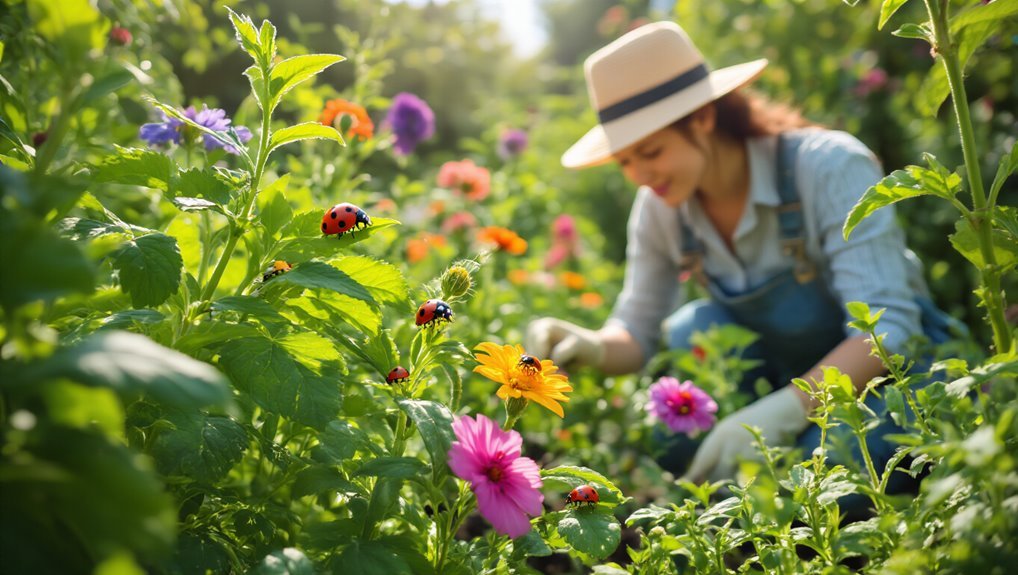
As pests can quickly turn a flourishing garden into a struggling one, having effective management strategies in place is essential.
Start by regularly inspecting your plants for signs of infestations. If you spot any pests, act promptly using organic solutions like neem oil or insecticidal soap. For even better results, consider incorporating pest control products designed specifically for home gardens to target persistent issues.
Encourage beneficial insects, such as ladybugs and lacewings, which can help control pest populations naturally. You might also consider companion planting—some plants repel pests when grown together.
Additionally, maintaining healthy soil through composting strengthens plant resilience against pests.
Finally, keep your garden clean by removing debris and weeds that can harbor pests.
For a comprehensive approach, consider using organic pest control solutions specifically formulated to target common garden pests without harming beneficial insects or the environment.
Seasonal Gardening Tips
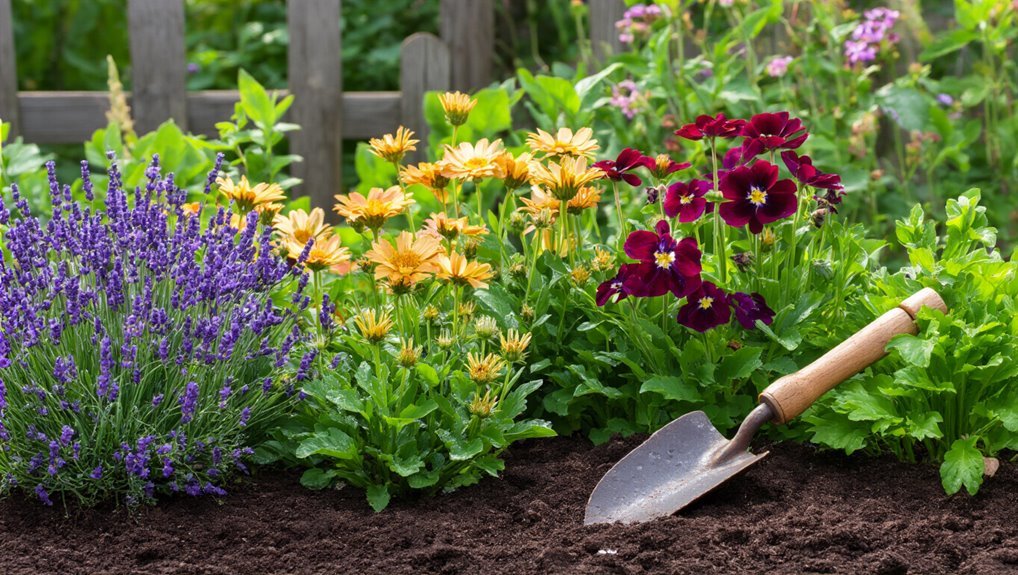
To make the most of your garden throughout the year, it’s crucial to adapt your planting and maintenance practices to each season.
In spring, focus on planting seeds and young plants as the soil warms up. Regularly weed and water to promote healthy growth. For an efficient way to create nutrient-rich soil, consider using a compost tumbler to speed up the composting process and reduce odors.
Summer’s heat demands diligent watering and mulching to retain moisture. This is also the time for harvesting your early crops.
As autumn approaches, it’s best to plant perennials and prepare your garden for winter by clearing debris and adding compost.
During winter, protect your plants from frost by covering them or bringing potted plants indoors.
Consider using compost bins to efficiently recycle garden and kitchen waste, turning it into nutrient-rich compost that will boost your soil’s fertility year-round.
Taking these seasonal steps ensures your garden thrives and remains beautiful year-round, maximizing your enjoyment and productivity.
Frequently Asked Questions
How Can I Attract Pollinators to My Garden?
To attract pollinators to your garden, plant a variety of native flowers, avoid pesticides, and create nesting sites. Water sources and diverse blooms will keep them coming back throughout the growing season.
What Are the Best Companion Plants for Vegetables?
To enhance your vegetable garden, consider planting marigolds to deter pests, basil to improve flavor, and beans to fix nitrogen. These companions promote growth, boost flavor, and create a balanced ecosystem for your plants.
How Do I Extend My Growing Season?
Think of your garden as a cozy blanket. To extend your growing season, use row covers, choose cold-hardy varieties, start seeds indoors, and plant in succession. You’ll enjoy fresh produce longer with these techniques!
What Tools Are Essential for Beginner Gardeners?
As a beginner gardener, you’ll need a few essential tools. Get a sturdy trowel, pruning shears, gloves, a watering can, and a rake. These will help you plant, maintain, and care for your garden effectively.
How Can I Create a Garden Design Plan?
When it comes to creating a garden design plan, start by sketching your layout. Don’t throw in the towel; consider plant height, sunlight, and spacing to ensure everything’s in harmony. It’ll pay off beautifully!
Conclusion
Now that you’ve uncovered these gardening secrets, it’s time to put them into practice. By focusing on soil health, selecting the right plants, and mastering watering techniques, you’ll cultivate a thriving garden. Don’t forget about pest management and seasonal tips to keep your garden flourishing year-round. So, are you ready to dig in and nurture your green thumb? Embrace these strategies, and watch your garden transform into a vibrant haven of beauty and growth.
